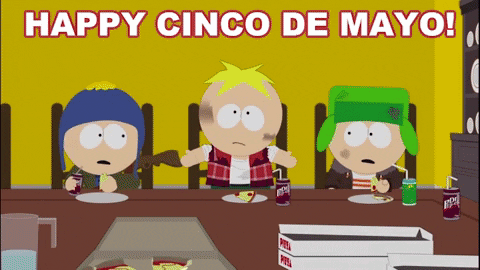Mantas Mexicanas y Mindfulness
Cinco celebrations often severe the history of a scrappy squad of Mexicans in el campo that fended off the French forces. Mexico was bankrupt and tried to pause payments to European, but Spain, the United Kingdom and France collectively said, “run us our money!” European creditor colonizers came through like Sallie Mae on her best day on some “Got my mind right, money right, ready for war” Memphis Bleek type rampage. Spain and United Kingdom quickly dipped out but Napoleon III, nephew of Napoleon Bonaparte, had a level of Master P No Limit Solider determination. Napoleon had plans to set up shop in Mexico so that he could trade guns for cotton with the Southern states in the Confederacy. Mexican General Ignacio Zaragoza said, “NOT ON MY WATCH!” On May 5, 1862 in the Battle of Puebla, General Zaragoza and his troops handed the French their asses; which leads us to why we celebrate Cinco de Mayo today.
Mexican-Americans and other Latinos living in California started celebrating Cinco de Mayo as early as 1862. California was a free state and Latinos living there supported the Union. When their home countries won independence from Spain, they abolished slavery and established citizenship for non-whites. Zaragoza’s victory was a catalyst for Latinos to mobilize and organize in support of Abraham Lincoln and the Union army and continue Cinco celebrations for more than a century. So how did that rich history morph into an excuse for Americans to strap on their sombreros and suck back all the cerveza? Your guess is as good as mine. I’m just here to draw the link between misguided marketing, capitalism, and cultural appropriation.
Something else that doesn’t sit right with my soul is that yoga studios across the country stockpiled stacks of textiles labeled “Mexican yoga blankets” while simultaneously teaching mindfulness. If we were truly practicing mindfulness we would ask:
· What makes these blankets Mexican?
· Where are they sourced? Are they authentic?
· Were the people that made them paid a fair wage?
South Mountain Yoga Studio, South Orange, New Jersey
In most cases, those blankets are purchased in bulk from wholesalers based in India and China and have zero connection to Mexico other than the brightly colored stripes often attributed to Central and South American culture. The type of blanket most often seen in studios is called a “falsa” which is pretty ironic because “falsa” translated to English means “false.” The name could be a nod to the knock-off quality of these machine-made mantas. The traditional Mexican manta originated as shawl style poncho, not a blanket. The serape originated in the 1800s in the Saltillo region of Mexico and was handwoven wool. Saltillo is the oldest city in northeastern Mexico and famous for the multi-colored Mexican blanket with the diamond shape in the center. The authentic version of a serape features a large section of color separated by red, white, and green stripes to signify the colors of Mexico’s national flag.
Vintage 1940's Serape Mexican Saltillo Blanket
Source: Pintrest
The fugazi falsas often feature stripes and a generic geometric design.
Source: Enhanced Body Yoga Retreat, Cabo Corrientes, Mexico 2017
A simple towel was one of the first yoga props, but blankets were introduced in the 1960s and 70s and popularized by yoga guru, B.K.S. Iyengar.
Iyengar is credited as traveling to Mexico and purchasing surplus blankets from the Spanish army to stock his yoga studio. As yoga grew in popularity across the Western World these mantas were mass-produced even more. Iyengar was not the start of this capitalist craze but he continued to be a conduit. Fast forward a little more than a century later and these blankets are produced in mass to placate American tourists; today Mexico annually exports 240,000 falsa blankets to the United States.
I hope that the blanket I handpicked from a market in Tulum was toiled on by an abuelita in a casita and she was compensated accordingly, although it’s likely that mine too was machine-made en masse. In my research, I found that Mexican craftspeople are beginning to revive the tradition of creating and crafting these textiles by hand. They are using mixed materials including acrylic, polyester, and cotton from recycled clothing from sources like Goodwill and the Salvation Army. The resurgence is a concerted effort to create sustainable economic opportunities, safe working environments, and to secure fair wages for local artisans. Consider contributing to cultural appreciation versus appropriation and being more mindful of imitation Mexican mantas and Cinco celebrations sans context.
Tulum, Mexico July 2014







